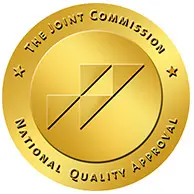Postpartum Depression Quiz [Self-Test]
Table of Contents

Postpartum Depression Self-Test
Understanding Postpartum Depression
Postpartum depression (PPD) is a significant mental health disorder, affecting numerous new mothers. It’s characterized by severe feelings of sadness, anxiety, and exhaustion, challenging new moms in performing daily care activities for themselves or their infants. This condition extends beyond the common ‘baby blues’ experienced after childbirth. While ‘baby blues’ typically resolve within a couple of weeks, postpartum depression symptoms are more severe and enduring, often impeding a woman’s capacity to care for her baby or herself.
Unlike the baby blues, which many women encounter post-childbirth, postpartum depression is not a sign of weakness or a condition that can be resolved through sheer willpower. It’s a grave mental health concern, necessitating immediate attention from healthcare professionals. PPD often results from a complex interplay of hormonal changes, psychological transition to motherhood, and fatigue. Symptoms usually emerge within the initial weeks following delivery but can appear up to a year postpartum. Research is exploring whether genetic factors may predispose some women to postpartum depression, highlighting the importance of a comprehensive medical history during diagnosis.
The range of symptoms in postpartum depression can vary from mild to severe. These include pronounced mood swings, profound fatigue, intense irritability, and feelings of inadequacy or difficulty bonding with the baby. While postpartum depression and bipolar disorder can share symptoms like mood swings and anxiety, they are distinct conditions requiring different treatments. Understanding this distinction is crucial for proper care. Women suffering from PPD may also experience disrupted sleep patterns, significant appetite changes, and even distressing thoughts of self-harm or harm to the baby. In such cases, employing a screening tool like the Edinburgh Postnatal Depression Scale (EPDS) is crucial for accurate diagnosis. Moreover, understanding the risk factors, engaging with support groups, and considering various treatment options like psychotherapy, medication, or a combination of both, are essential steps in managing postpartum depression effectively.
Postpartum Depression Self-Test
Common Signs of Postpartum Depression
Recognizing these signs is the first step in postpartum depression screening, a crucial process for early intervention and treatment. According to the National Institute of Mental Health, common indicators of PPD include:
- Persistent and profound sadness, feelings of emptiness, or being overwhelmed.
- Increased frequency of unexplained crying.
- Heightened worry or anxiety levels.
- Moodiness, irritability, or restlessness.
- Significant changes in eating habits, either overeating or under-eating.
- Altered sleep patterns, including excessive sleeping or insomnia, unrelated to the baby’s sleep schedule.
- Challenges in focusing, concentrating, or making decisions.
- Unexpected feelings of anger or experiencing intense rage.
- Loss of interest in previously enjoyable activities.
- Experiencing physical symptoms such as headaches or stomach issues.
- Distressing thoughts of self-harm or harming the baby.
These symptoms align with a study from NIH, a comprehensive list of signs and symptoms for perinatal depression. It’s crucial to note that if these symptoms persist beyond two weeks, consulting a healthcare provider or a mental health professional is imperative. While an online self-evaluation, such as a postpartum depression quiz, can aid in identifying potential symptoms, it cannot replace professional diagnosis and treatment.
Risk Factors and Comprehensive Care:
It’s important also to consider risk factors like personal or family history of depression, hormonal changes, and stressful life events. Postpartum depression affects not only the mother but also her ability to connect with her baby and her family dynamics. Pediatricians, through regular checkups, can play a vital role in identifying early signs of postpartum depression, offering an additional layer of support for new mothers.
As part of understanding the risk factors for PPD, exploring questions like ‘Is postpartum depression genetic?‘ is vital, as it sheds light on the potential hereditary aspects of this condition. For those seeking to support a loved one, learning how to help a friend with postpartum depression is essential. This includes seeking support from health care professionals, exploring treatment options like therapy and medication, and considering joining support groups. Preventive measures, including stress management and prenatal counseling, can also be beneficial in managing PPD.
Types of Treatment

Effective treatment for postpartum depression is crucial for recovery. Here are the primary treatment modalities:
- Medication: Antidepressants play a key role in balancing brain chemicals related to mood and emotions, helping alleviate symptoms of PPD.
- Psychotherapy: Techniques like Cognitive Behavioral Therapy (CBT) and Interpersonal Therapy (IPT) are effective in managing PPD. Therapy offers strategies for symptom management, emotional coping, problem-solving, and fostering positive responses to challenging situations.
- Hormone Therapy: Estrogen replacement therapy may counterbalance the postpartum estrogen drop, potentially aiding mood stabilization. However, its use requires careful consideration of side effects.
Each treatment type is tailored to individual needs and may involve health care professionals from different fields, including mental health professionals and OB/GYNs. It’s vital to remember that early screening using tools like the Edinburgh Postnatal Depression Scale (EPDS) can aid in prompt diagnosis and treatment initiation. Regular checkups with healthcare providers are essential to monitor the effectiveness of these treatments, ensuring the best outcomes for mothers struggling with PPD.
The Process of Postpartum Depression Therapy
In-Depth Initial Assessment: Begin with a thorough evaluation, incorporating standardized screening tools like the Edinburgh Postnatal Depression Scale (EPDS) to gauge the severity and specifics of your symptoms. An essential component of therapy is the validation of the patient’s experiences and feelings, fostering a supportive and understanding environment for recovery. This step is crucial for tailoring the therapy to your unique needs.
- Collaborative Goal Setting: Together with your therapist, establish specific, realistic goals focused on managing symptoms, improving the mother-child bond, enhancing personal relationships, and building effective coping mechanisms.
- Flexible and Responsive Therapy Schedule: Therapy sessions, whether weekly or bi-weekly, are adjusted to suit your progress and needs. This flexibility ensures that the therapy remains effective and responsive to changes in your condition.
- Utilizing a Range of Therapeutic Techniques: The therapy may incorporate various approaches. Cognitive Behavioral Therapy (CBT) addresses negative thought patterns, while Interpersonal Therapy (IPT) focuses on enhancing social support networks. Additional techniques, such as mindfulness and relaxation strategies, may also be integrated.
- Active Engagement Through Homework: Practical assignments encourage the application of therapy concepts in daily life. This might involve mindfulness exercises, reflective journaling, or implementing specific stress-management strategies.
- Continuous Progress Review and Adaptation: Regularly review your progress with your therapist, ensuring that the therapy remains aligned with your evolving goals and needs. This dynamic approach allows for adjustments to the therapy plan as you progress.
- Emphasis on Patience and Open Communication: Recognize the importance of patience and consistent communication with your therapist. Therapy is a journey with its own pace, and being open about your feelings and experiences is vital for effective treatment
- Support Beyond Individual Therapy: Explore additional support options, such as joining postpartum support groups or engaging in family therapy, to complement individual therapy sessions. This holistic approach can provide broader support and aid in recovery.
Medication vs Therapy

Treating postpartum depression effectively often involves a combination of medication and therapy. Antidepressants, crucial in managing chemical imbalances, are particularly beneficial for severe PPD or when self-harm risks are present. However, discussing potential side effects with healthcare professionals, especially for nursing mothers, is essential.
Therapy offers a complementary, non-pharmacological approach. It provides a supportive environment to process emotions, challenge negative thoughts, and develop coping strategies. Addressing relationship dynamics, self-esteem, and feelings of inadequacy, therapy plays a key role in holistic recovery.
Often, a dual approach of medication and therapy, tailored to individual needs by healthcare and mental health professionals, yields the most effective results. Decisions regarding treatment should be made in collaboration with healthcare providers, taking into account personal circumstances and preferences. This integrated approach ensures comprehensive care, aligning with screening tools like the Edinburgh Postnatal Depression Scale (EPDS) for a nuanced treatment plan.
Living with a Partner with Postpartum Depression
Living with a partner who is experiencing postpartum depression (PPD) requires a multi-faceted approach that includes understanding, empathy, active support, and self-care.
- Educational Awareness: It’s vital to understand PPD’s symptoms, potential causes, and treatment options. This knowledge can help you recognize the signs early and provide informed support. Resources from mental health organizations and healthcare providers can be instrumental in gaining this understanding.
- Empathy and Patience: Recognize that PPD is a complex medical condition influenced by hormonal changes, emotional factors, and possibly external stressors. Showing empathy and practicing patience are essential as your partner navigates their feelings and recovery.
- Active Assistance in Daily Life: Taking an active role in childcare and household responsibilities can significantly alleviate your partner’s stress. This support can range from handling nightly feedings to managing appointments, allowing your partner time to rest and recuperate.
- Encouragement for Professional Help: Advocate for seeking professional help. This may include therapy, counseling, or medical treatment. Accompanying your partner to appointments can offer additional support.
- Self-Care for Partners: Supporting a partner with PPD can be challenging. It’s important to maintain your own well-being through healthy eating, adequate rest, and engaging in activities you enjoy. Remember, taking care of yourself is not a luxury, but a necessity to be an effective support for your partner.
- Building a Support Network: Consider joining support groups for partners of individuals with PPD. These groups offer a space to share experiences, gain insights, and receive emotional support from others who are in similar situations.
- Open Communication: Maintaining open and honest communication with your partner is crucial. Discuss your feelings and challenges and work together to find ways to support each other.
Living with a partner experiencing postpartum depression (PPD) requires understanding, empathy, active support, and self-care. While navigating this, it’s also helpful to know ‘how to help a friend with postpartum depression.’ The principles of empathy, patience, and encouraging professional help apply not just within your partnership, but also in supporting friends who may be facing similar challenges. This broader understanding can enrich the support you provide at home and extend your empathy to others in your community.
Studies on Postpartum Depression

Scientific research has significantly contributed to our understanding of postpartum depression. This mental health condition affects many women worldwide, and several studies have aimed to understand its prevalence, causes, symptoms, and treatment strategies better.
Prevalence of Postpartum Depression
Multiple studies have sought to determine the prevalence of postpartum depression among new mothers. According to a systematic review by Gavin in 2005 titled “Perinatal depression: a systematic review of prevalence and incidence”, approximately 13% of women experience depressive symptoms within the first 12 weeks postpartum.
Hormonal Changes and Postpartum Depression
The role of hormonal changes in postpartum depression has also been the subject of several studies. A study done in 2008 “Reproductive hormone sensitivity and risk for depression across the female life cycle: A continuum of vulnerability?” indicates that the rapid drop in estrogen levels following childbirth may contribute to mood swings and depressive symptoms.
Therapeutic Interventions
Numerous studies have also examined the effectiveness of different therapeutic interventions in treating postpartum depression. For instance, a review by Sockol, Epperson, and Barber, 2011 titled “A meta-analysis of treatments for perinatal depression” found that both Cognitive Behavioral Therapy (CBT) and Interpersonal Therapy (IPT) are effective in treating postpartum depression, significantly reducing depressive symptoms.
Impact on Partners and Children
Research has also investigated the effects of postpartum depression on partners and children. In a study conducted by Ramchandani in 2008 titled “Depression in men in the postnatal period and later child psychopathology: a population cohort study”, it was found that fathers’ depression in the postnatal period was associated with adverse emotional and behavioral outcomes in children at 3.5 years. This highlights the importance of recognizing and treating postpartum depression in both mothers and fathers.
Reach Out to Acera Health
Acera Health is dedicated to supporting individuals coping with postpartum depression. Our comprehensive outpatient services are tailored to each person’s unique needs, encompassing medication management, individual and group therapy, and a range of supportive services. Our multidisciplinary team is committed to helping you manage symptoms and enhance your quality of life. For more information about our services and how we can assist in your journey to wellness, contact Acera Health. You’re not alone; let us help you navigate this path to recovery.
Get Postpartum Depression Treatment in Orange County
Contact us to know more about our postpartum depression treatment, so you can achieve successful long-term recovery.

Reach Out Today
To learn more about if Acera Health is right for you, and what to expect, contact us Today!
"*" indicates required fields
3100 Bristol St. Suite # 250 Costa Mesa, CA 92626
info@acerahealth.com
DHCS license number: MHBT220400
DHCS license expiration date: July 20, 2024
DSS license number: 306006131 & 306006072



